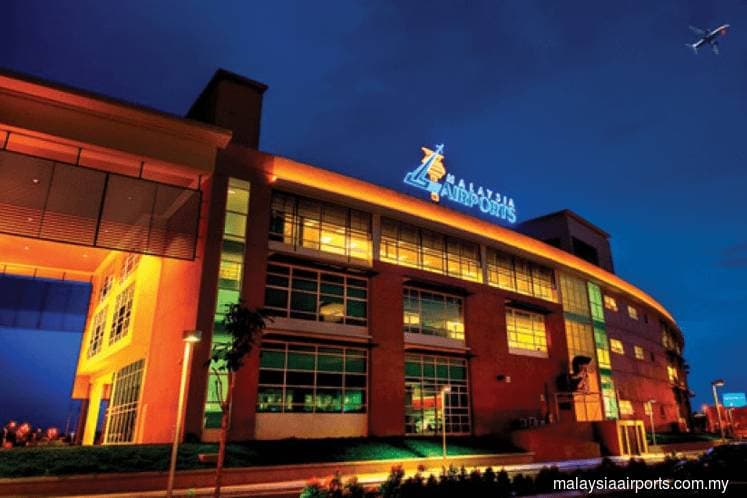
This article first appeared in The Edge Financial Daily on June 17, 2019
KUALA LUMPUR: The share price of Malaysia Airports Holdings Bhd (MAHB) has been trending upwards this month, ahead of the consultation paper to be released by the Malaysian Aviation Commission (Mavcom) on passenger service charges (PSC).
Last Friday, MAHB’s shares closed 25 sen or 3.16% higher at RM8.17 apiece. While still lower compared to the start of the year, the counter has gained RM1.17 or 16.71% from when it was trading at RM7 in end-May.
When contacted by The Edge Financial Daily, Mavcom confirmed that its consultation paper will be released this week.
But it is not just a possible revision of the PSC rates that is driving the hype, according to MIDF analyst Adam Rahim. “[The paper] will shed some light on how the new PSC rates will possibly be, and probably more details on the upcoming regulated asset base (RAB) framework before the final announcement in October 2019,” Adam told The Edge Financial Daily in an email reply.
Indeed, some expect the June release — Mavcom’s third under its “aeronautical charges framework” consultation papers — to provide greater certainty that the proposed RAB framework will be enforced on the airport sector as early as next year.
Under the existing operating agreement, the development of airport infrastructure has been government-funded while MAHB is responsible to maintain the 39 airports in the country it manages.
MAHB also shares 11% of its revenue with the government as user fee.
With the proposed RAB framework, the government is set to share the capital expenditure burden with MAHB. This is expected to enable MAHB to plan its growth more efficiently, while letting it pass down the capex costs via regulated rates to airport users.
Still, the regulated rate of return depends on achieving the passenger count target — so, MAHB will be encouraged to be more efficient and deliver better services in light of intense competition regionally.
The government, on the other hand, will continue to hold the responsibility of spurring the nation’s tourism industry.
In the first quarter of 2019, Malaysia’s tourist arrivals rose 2.7% year-on-year to 6.7 million from 6.52 million. Last September, the government announced it had revised its Visit Malaysia 2020 tourist arrival target to a more realistic target of 30 million, from 36 million previously.
Meanwhile, from January to May this year, passengers who flew international — who pay higher PSC compared to those flying local — grew across MAHB’s local airports at a modest 1.05% y-o-y to 21.56 million. The current PSC stands at RM35 for outbound travellers to Asean destinations, and RM73 for other international destinations beyond the Asean region.
After missing its 2018 passenger volume growth target by 4% — the airport operator saw 2.5% more passengers passing through the 39 airports to reach 99.03 million, from an anticipated growth of 6.5% — analysts are expecting that the airport operator’s growth will come in at a low, single-digit this year.
MAHB itself has also set a lower passenger growth target of 4.9% this year, with international and domestic passenger traffic growing at 2.4% and 7.6% respectively.
Meanwhile, PSC adjustments should take into account the departure levy due September this year. Recall that just in April this year, the Dewan Rakyat passed the Departure Levy Bill 2019, which will see a fee of RM20 imposed on any air traveller leaving Malaysia for another Asean country, and RM40 imposed on those leaving for other countries. Currently, PSC is imposed on departing passengers in 21 out of the 39 MAHB-operated airports in the country.
One possible scenario observers are looking out for is the imposition of different PSC charges in different airports, depending on the quality of infrastructure. This will allow MAHB to use proceeds from its busier airports to make up for the unprofitable ones.
The devil is in the details
If the RAB is done right, the counter still has room for further gains. MAHB’s recent share price rally came from a low base in 2Q19, where it slumped to on what is likely worries that it could be dropped as a component of the FBM KLCI.
The counter currently has 14 ‘buy’ calls and three ‘hold’ calls, with target prices (TPs) of between RM7.80 and RM10.50, with a 12-month TP average of RM8.98, implying a 9.91% potential gain from Friday’s close.
Only three calls have lower TPs compared to its Friday’s close, and most have not included the RAB framework implementation.
The devil, after all, is in the details. Mavcom must finalise the PSC rates and user fees, the frequency of revision, choice of revenue or price cap, and the components for RAB’s rate of return, among others.
Investors will want the arrangement to include a mechanism to limit the downside risk from unplanned events such as natural disasters, which could severely affect passenger count.
In the last consultation paper, the regulator has put the rate of nominal pre-tax weighted average cost of capital at a range of between 9% and 11%. A lower-than-expected rate of return and PSC revision would put a cap on MAHB’s share price.
In addition, this will be a test for Mavcom, to show whether it can enforce the RAB framework on all stakeholders.
“Recall that Mavcom was dragged by AirAsia Group Bhd in its dispute with MAHB after the budget airliner refused to impose PSC charges on its passengers,” an analyst with a foreign investment bank pointed out.
“But overall, this (RAB framework) is the sort of changes long-awaited from the government after a period of policy uncertainties recently,” the analyst added.